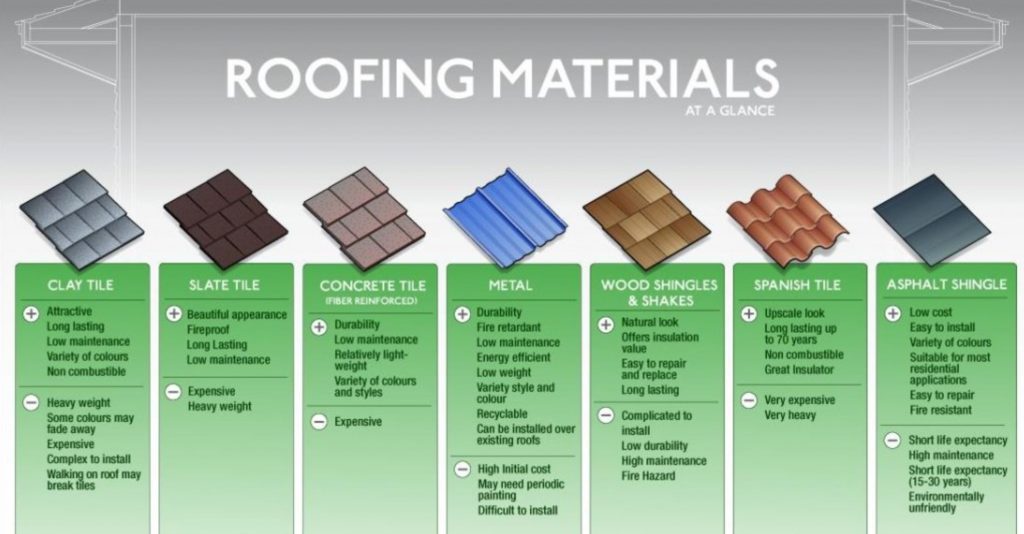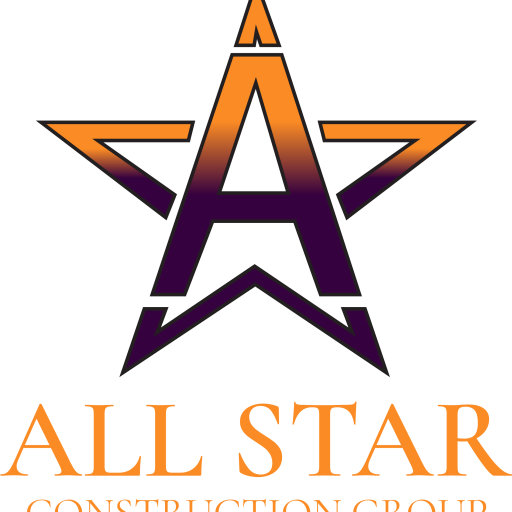
Selecting the type of roofing material is one of the biggest decisions that homeowners have to make while constructing or remodeling a home. Your roof is not only what separates your home from direct sunlight and snow or rain but also impacts how energy-efficient the home is, its appearance, and future expenses for repairs and maintenance. Professional Roofing Construction Services In order to recommend a specific roofing material it is important to inform you of different types that exist, what their strengths and weaknesses are, and which might be the most suitable for your house.
1. Asphalt Shingles
Asphalt shingles are one of the most demanded types of roofing material because of their low costs and wide applicability. Asphalt shingles come in two primary forms:Asphalt shingles come in two primary forms:
• Three-tab shingles: These are AllStar Construction Group and provide a flat surface for the board.
• Architectural shingles: Thicker and more durable, these provide a more textured look and feel that closely replicate wood or slate, for example.
Advantages:
• Affordable and accessible by the population.
• The tray is easy to fit and remove making the replacement process fast and very convenient for the user.
• It provides a medium level of safety from harm’s way in regards to wind and rain.
Disadvantages:
• The sand durability occurs faster than any other building material and may last between 15-30 years.
• Susceptible to algal formation as well as bleaching of color on the fabric surface.
2. Metal Roofing
Metal roofing is one of the most sought after roofing in the market for both residential and companies. It is appreciated because of its strength, energy conservation and its minimally invasive look.
Advantages:
• Very long-wearing, having a service life of 40- 70 years.
• It is heat reflective and therefore cuts energy costs of cooling the house.
• Fire Resistant, Moisture/mildew resistant and insect resistant.
Disadvantages:
• Prone to scratch and are more expensive in the initial stages as compared to asphalt shingles.
• The product has to be professionally installed to warrant correct sealing and ventilation.
3. Clay and Concrete Tiles
For those wishes to have a conventional or even Mediterranean look, clay and concrete tiles are perfect. Due to this characteristic of these tiles, they are mostly preferred in regions with high temperatures and around the coastal lines.
Advantages:
• Durable; can last between 50-100 years depending on the level of maintenance given to the structure.
• This is also one of the best options in terms of protecting your skin from heat and UV rays.
• Gives the house a completely different look and in most cases it has to be done as it gives the house a new look.
Disadvantages:
Encompassing a large area, and therefore necessitating heavy roof supporting beams and structures.
• It is costly and requires a lot of installation processes to be enhanced.
• Susceptible to cracking, particularly in conditions where shocks are frequently applied, or temperature drops sharply.
4. Slate Roofing
Slate roofing is one of the best and high-end roofing systems on the market of roofing services. Slate has been widely used because of its all-natural appearance and durability that is commonly used in expensive houses
Advantages:
• May last over 100 of years.
• Fire Resistant and prove to withstand severe and extreme weather conditions.
• Also gives an added value and a royal outlook to a home.
Disadvantages:
• It is very costly as compared to other materials that are used in fabrication.
• Is often burdensome, comes with the need for an additional structure.
• Difficult and expensive to purchase and fix or replace.
5. Wood Shingles and Shakes
Wood shingles and shakes make the building look naturally, which is ideal for cottages or, for example, houses built from environmentally friendly materials. The primary distinction between shakes and shingles is that shakes contain handsplit while shingles contain machine cut and also they are little bumpy in looks.
Advantages:
• They arc naturally insulating and therefore more energy efficient.
• Carbon neutral if harvested from managed forests or plantations, and if producing no pollution during processing.
• Enhances the design with a touch of the natural kind.
Disadvantages:
• In its normal form, it is flammable but can be made fire resistant with an application of a fire- resistant layer or coating.
• Needs routine care so as not to develop decays, molds, and insects’ infestations.
• They should not be placed at areas of high humidity or a region which is inclined towards massive fires.
6. Synthetic Roofing
There are artificial materials that mimic the appearance of organic materials like slates or timber, although they are made of rubber, plastic, or polymer in nature and cost significantly less.
Advantages:
• It is preferably lighter and easy to fix especially on roofs of buildings.
• Shrinkage proof, anti-crack, and can withstand different forms of weather.
• They cost less as compared to other natural materials like slate or even wood.
Disadvantages:
• Has been in the market for only a short period, and therefore it has not been proven how durable the product is.
• May have a less natural appearance as it may not resemble real wood or slate used for natural applications.
Conclusion
The various types of roofing materials have advantages and disadvantages that can suit one’s pocket, style preference, and climate. Whether one is looking for budget-friendly asphalt shingles, durable metal roofs, or the longevity of slate roofing, the right material has more to do with the homeowner’s priorities. It is advisable that you speak with a professional roofer so that you can be advised on which of the options is most suitable for your house.

